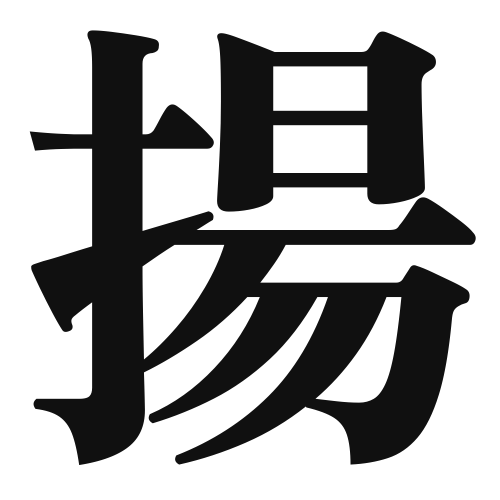1. Overview of Meaning
The kanji “揚” (yō) primarily means “to raise,” “to lift,” or “to elevate.” It is often associated with actions that involve lifting something up or bringing it to a higher position.
2. Formation and Radical
Formation of the Kanji: The kanji “揚” is a phono-semantic compound (形声文字), which means it combines both a phonetic component and a semantic component. The left part, “扌” (the hand radical), indicates an action related to the hand, while the right part “羊” (sheep) contributes to the pronunciation.
Radical: The radical of “揚” is “扌,” which is related to hand actions.
3. Examples of Usage
Common Words and Phrases: Some frequently used words that include “揚” are:
- 揚げる (ageru) – to fry or to raise
- 揚げ物 (agemono) – fried food
Example Sentences in Daily Conversation:
- 天ぷらを揚げるのが得意です。 (Tenpura o ageru no ga tokui desu.) – I am good at frying tempura.
- 彼は旗を揚げました。 (Kare wa hata o agemashita.) – He raised the flag.
4. Synonyms and Antonyms
Similar Kanji: A similar kanji is “上” (ue), which also means “up” or “above,” but it is more general and does not specifically imply the action of lifting.
Opposite Kanji: The opposite kanji is “下” (shita), which means “down” or “below.”
5. Cultural and Historical Background
Relation to Japanese Culture: The kanji “揚” is often used in culinary contexts, especially in Japanese cuisine, where frying is a common cooking method.
Proverbs and Idioms: One common phrase is “揚げ足を取る” (age ashi o toru), which means to nitpick or to find fault with someone, often in a critical manner.
